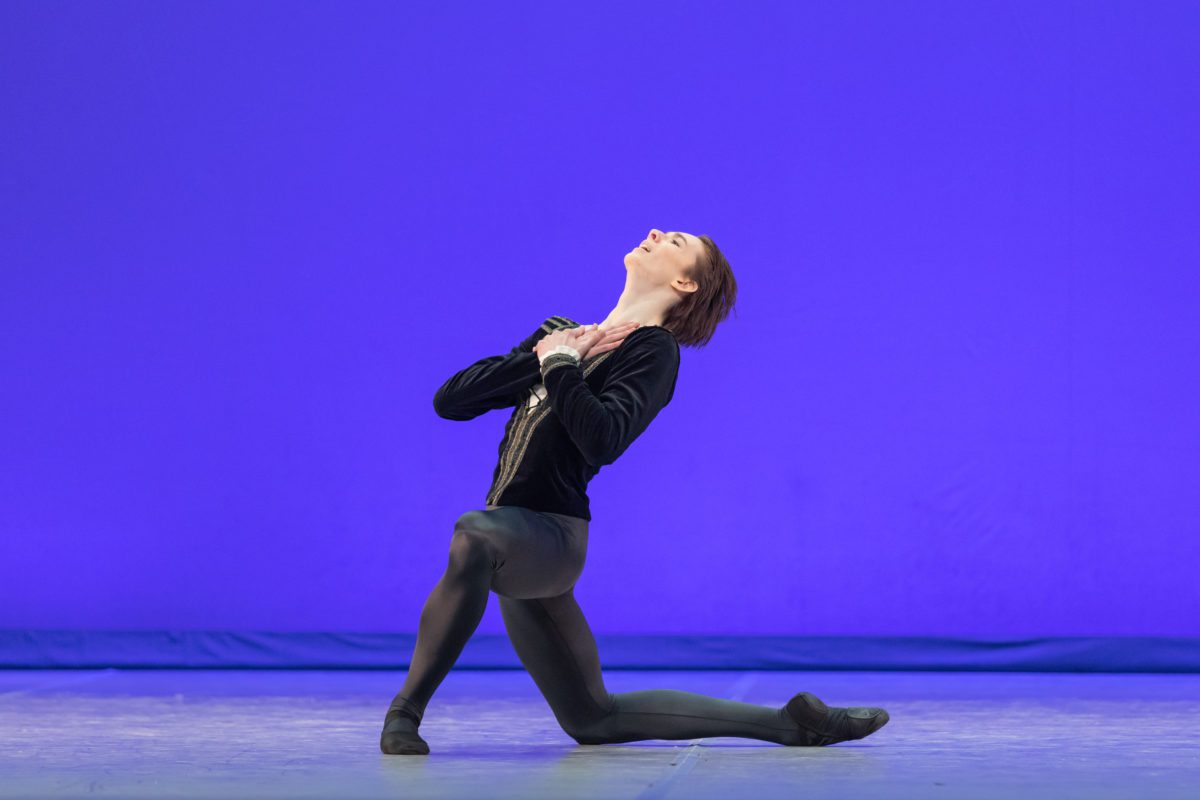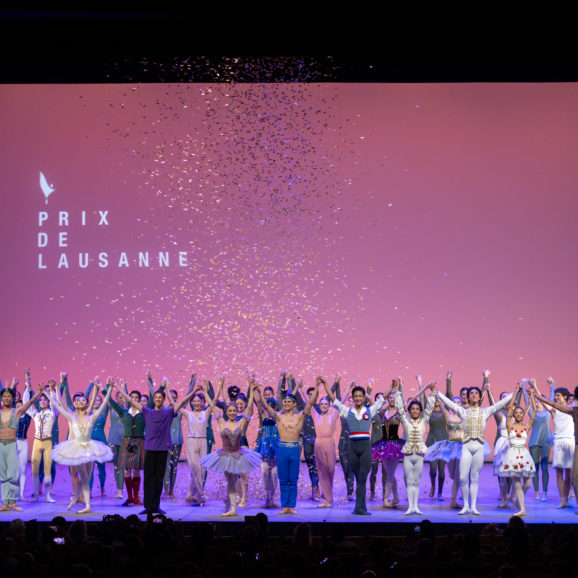Sylvie Guillem, in her own words – October 2025:
Born on February 23, 1965, in Paris.
Danced until the very end of 2015!
Producer of a fine olive oil…
A devoted lover of nature and animals.
For more (true or false) information, check the internet…
Pure physical prowess was the beginning of Sylvie Guillem’s career, but it was theatre that seduced her and made her the great star of her generation. Born in Paris, she began as a gymnast with Olympic hopes, but at 11 when she and her group attended the Paris Opera’s ballet school for polishing, she switched ambitions. The teachers accepted her with delight, bowled over by her extraordinary physique, amazing feet, tremendous jump, and equally by her intelligence and determination. Already as a student she attracted attention in the school performances of ballets by David Lichine, Albert Aveline and Attilio Labis. Joining the Paris Company at 16, she raced right up the hierarchy, winning promotion every year in the annual competitions.
Rudolf Nureyev, appointed artistic director of the company as she began her third year, gave her a small role in his debut production, Raymonda, quickly followed by others as he continued diversifying the repertoire. Her swift, light technique proved radiant in the “Shades” solos of his Bayadère vision scene, her dancing in Balanchine’s Divertimento No 15 showed style. Even more notably, she danced everyone else off stage in Rudi van Dantzig’s No Man’s Land, her powerful dramatic sense creating a convincing portrait of tension and tenderness, anxiety and determined self-sufficiency. In December 1984, aged 19 (and only five days after she had won promotion to première danseuse ranking), Nureyev appointed her étoile, star dancer, coming on stage at the end of her first Swan Lake to make the announcement publicly.
Over the next few years many visiting choreographers put her into their creations. William Forsythe led the way with France Danse and later gave her the central role of In the Middle, Somewhat Elevated. Maurice Béjart made Mouvements Rythmes Etudes and Arépo featuring her; she stood out in Carole Armitage’s GV10 and John Neumeier made a brilliant solo for her in Magnificat. Especially influential was the experience of creating Robert Wilson’s minimalist Le Martyre de St Sébastian. Jerome Robbins chose to mount his In Memory of… specially for her, and she was prominent in the company’s Antony Tudor programme and in MacMillan’s Song of the Earth, also in other works by Balanchine, Béjart and Lifar. Naturally she danced the big classics too: Nureyev particularly liked her in his Don Quixote (“like champagne”, he said), and in 1986 he made the title part in his Hollywood-based Cinderella for her.
However, because the Opéra’s administration would not change her contract to make it easier for her to accept invitations abroad, in 1988 she resigned and made London her main base, with a guest contract at The Royal Ballet. Her roles there have included, besides the classics, Ashton’s Birthday Offering, Cinderella, Marguerite and Armand (Fonteyn’s first replacement) and Month in the Country, MacMillan’s Romeo and Juliet, Manon, Prince of the Pagodas and Winter Dreams, and Robbins’s The Concert. Her wish for a wider range inspired Royal Ballet productions of Mats Ek’s Carmen and Forsythe’s Herman Schmerman, Steptext and the new Firsttext, and several showpiece dances were given only for her: Robbins’s Other Dances, Béjart’s La Luna, also Victor Gsovsky’s virtuosic Grand Pas Classique, to which she added an unexpected touch of humour.
Travelling worldwide to perform with many companies (including guest appearances at the Opéra), she took further opportunities to enlarge her repertoire, including Rostislav Zakharov’s Fountain of Bakhchisarai for the Kirov Ballet (choosing to play the tough wife Zarema, not Ulanova’s romantic Polish princess) and Agnes de Mille’s Fall River Legend with American Ballet Theatre. Béjart created three further ballets for her (including SissiImpératrice, about the eccentricities of the Austro-Hungarian Empress Elisabeth) and cast her in two of his most famous works, Bolero and The Rite of Spring. Mats Ek made two filmed ballets for her with special effects, Wet Woman and Smoke. Collaborations with the film maker Francoise Va Han have documented parts of her career and included her own improvisations, also a strange walking around solo for her, Blue Yellow, commissioned from the independent British choreographer Jonathan Burrows.
Guillem’s interest in modern-dance choreography led her to the experiment of putting on versions of two solos by the German expressionist pioneer Mary Wigman, Summer Dance and The Witch’s Dance, which she showed in an experimental programme at The Hague in 1998. In contrast, that same year she was persuaded by Jorma Uotinen, then director of the Finnish National Ballet, to stage her own new production of one of the oldest classical ballets, Giselle. Her purpose, she said, was to restore the logic of the narrative and set it in a more plausible village context. The interesting result was performed by the Finnish company in Helsinki and Paris, then reworked for the Ballet of La Scala, Milan, who showed it also at the New York Met, Covent Garden, Los Angeles and on Spanish and Italian tours.
Maybe this could indicate a possible future for her activities, but for the present Guillem seems largely to have given up traditional classical ballet, in favour of modern choreography. Her current activities effectively began in December 2003 when, at her own urging, she collaborated with the dancers Michael Nunn and William Trevitt and the choreographer Russell Maliphant on a creation, Broken Fall, premiered at Covent Garden Opera House on a joint programme with The Royal Ballet. This led, again with Nunn and Trevitt, to an all-Maliphant programme including a reworked solo for her, given in two seasons at Sadler’s Wells, also in France, Japan, Italy, Switzerland and Germany. And in turn that has led to the present second Maliphant evening, PUSH with two further premieres, another solo for her and the duet for Guillem and Maliphant, Push. PUSH was followed in 2006 by Sacred Monsters, a new collaboration with Akram Khan, which premiered at Sadler’s Wells. In 2009 Guillem collaborated with Russell Maliphant and Robert Lepage for Eonnagata. Those productions have toured extensively across Europe, America, Asia and Australia. In 2011, Guillem designed a programme to pay tribute to three of today’s greatest choreographers: Mats Ek, William Forsythe and Jiří Kylián – the first time their work has been on the same bill. The title of the evening, 6000 miles away, was an homage to the people of Japan, where she has danced every year for the last 30 years, who suffered the devastating effects of the Tsunami when she was rehearsing in London.
In 2012, Guillem was awarded a Golden Lion for Lifetime Achievement by the Venice Biennale. In the dance world, only the choreographers William Forsythe and Caroline Carson have been awarded such an accolade before her. And in 2015, she received a special award at the Olivier Awards, celebrating her achievements over the course of her career.
After that, who can tell – but it is impossible to believe that the dance world will lack a strong input of whatever sort from the unique (and much decorated — Officier de la Légion d’Honneur, Commandeur dans l’Ordre National du Mérite, Officier des Arts et Lettres, and in Britain an honorary CBE) Sylvie Guillem received in 2015 the Premium Imperial Award.
Biography by John Percival MBE, who was The Times’ dance critic for 32 years before joining The Independent (1997–2002). A critic with a wide-ranging mind and encyclopedic knowledge, Percival has written numerous books, including Nureyev: Aspects of the Dancer (1975), Facts about a Ballet Company (1978), Modern Ballet (1980), and Theatre in My Blood: A Biography of John Cranko (1983). The biography was updated in December 2015 and provided by Sylvie Guillem, to whom we are very grateful.
Photo: courtesy of Sylvie Guillem



